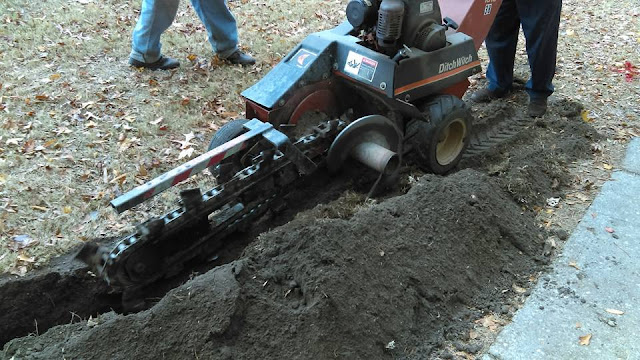New Irrigation Line Complete
Last week we were able to complete our supplemental irrigation line to improve irrigation coverage to the renovated area on hole 13. The area did not previously have solid irrigation coverage, because the left side of the hole was inhabited by primarily trees and bare ground. The newly renovated area is growing on very sandy soil and is still subject to cart traffic and root intrusion. With all of these drying factors at play, the installation of this new line will ensure that the work done to improve the hole is successful in the future. We replaced sod where it was possible to pull solid pieces, but in many areas along the path, the root intrusion made harvesting sod impossible. In these areas, the dirt on the trench line will be given time to settle, and sod will be purchased to cover these areas in the late winter / early spring months. As a reminder, the cart rule on holes 13 and 14 will remain Path Only during the winter months.
Below are some pictures of the process of adding our new irrigation line to 13.
 |
| Measurements, plans, marking the existing line and shutting down water begin the project |
 |
| The existing irrigation is hand dug to confirm pipe size and prepare for tie ins |
 |
| Tie ins to the irrigation line are set before trenching begins |
 |
| It's always nice when the trencher can easily blaze the trail |
 |
| Nice and easy.......right? |
 |
| But sometimes you need the back ho |
 |
| And in cases like this, the stump grinder acts as the trencher |



















